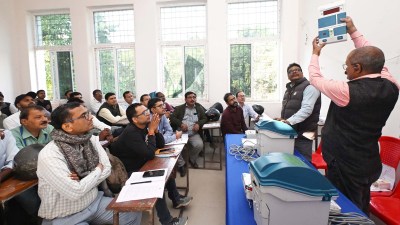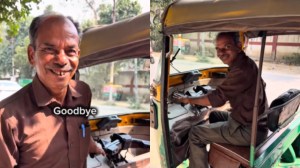Suicides through the glass darkly
The farmer suicide outbreak is both alarming and tragic, especially when India is enjoying unprecedented economic growth.

The farmer suicide outbreak is both alarming and tragic, especially when India is enjoying unprecedented economic growth. The crisis in agriculture is undoubtedly a major cause. But an examination of the patterns of suicide suggest that the policy diagnosis is indebtedness, and hence the solution of extending liberal credit may be inadequate.
There is clearly more to farmer suicides than indebtedness. Let us compare the two most farmer-suicide prone states, Maharashtra and Andhra Pradesh, with two of the most backward states, Bihar and UP. The suicide mortality rates in Andhra and Maharashtra are high and growing significantly whereas the rates in Bihar and UP have been consistently low. There is no obvious reason to believe farmer distress is lower in Bihar and UP than in Andhra and Maharashtra.
What about indebtedness as the major cause of suicides? A Maharashtra report concludes that 93 per cent of farmer suicides in the state are due to indebtedness. In response, policy interventions have taken the form of loan waivers, loan rescheduling and reduction in interest rates. The state has promised to pump more institutional credit into agriculture too. It has doubled the annual agriculture credit plan from Rs 1,373 crore while the PM’s package more than tripled credit flow for the region to Rs 2,583 crore.
However, the role of lowering indebtedness in reducing suicides is not straightforward. Data suggests that debt burden declines with an increase in asset-holding — poorer households tend to have a higher debt burden. However suicide data indicates that the incidence of suicide is higher among households with larger land holdings. Nearly 86 per cent of Maharashtra’s farmers who committed suicide had more than two acres; and 60 per cent, more than four. According to NSS, in 2002 about 27 per cent of rural households were indebted. Whereas Andhra reports the highest rural Incidence of Indebtedness (IOI, or the percentage of households that are in debt) of 42 per cent, Maharashtra has a rural IOI of 27 per cent — not very different from Bihar’s 24 per cent and UP’s 22 per cent. Again, it is true that the share of institutional credit in overall rural debt has declined from 64 per cent to 57 per cent from 1991 to 2002. But in Maharashtra, where this share was already high, there has been a marginal increase from 82 to 85 per cent. And during this period, there was a sharp decline in Bihar from 73 to 37 per cent. Interestingly, this coincides with a drop in farmer suicide rates in the state.
Causes of individual suicide are complicated, and could include a history of difficulties and perhaps mental illness. These are mostly undiagnosed or untreated. Substance abuse and mood disorders are common. Evolutionary psychology literature argues that a sense of burdensomeness towards kin may encourage suicide by eroding the motive of self-preservation.
At the same time, suicide contagions are not new and occur worldwide with people in a region committing copycat suicides. Such a contagion is observed in Maharashtra as well, where 76 per cent of all suicides have been concentrated in six districts. Nearly 60 per cent of farmers who committed suicide owned more then four acres of land and are predominantly cotton producers. Suicide is caused by many factors, even when it occurs in a cluster. The tendency to sensationalise these deaths in the media is a key facilitator. Suicide clusters have been reported in groups such as religious sects, troops, college students and the like. Research indicates that during the period immediately after a suicide, grieving family members or friends have difficulty understanding what happened. Responses may be extreme and underlying causes, oversimplified.
The main concern is that by dramatising the impact of such deaths through descriptions and pictures of grieving relatives, suicide becomes an acceptable reaction. The media provides the means by which information about a suicide is spread. However, studies on copycat suicides indicate that prominent media coverage has the effect of increasing suicide behaviour within the readership/viewership area. The magnitude of the increase is related to the nature of the publicity. Sensitive reporting — for instance, presenting suicide as a bad choice to resolve a crisis — can play a very important role in saving lives and preventing copycat suicides. Research findings suggest the need to avoid glamorising the victim (happens also during highly publicised politician visits) or offer special concessions that might aggravate suicide contagion.
The Indian media needs to develop guidelines for reporting suicides, like the BBC and The Guardian have. India requires such guidelines to be part of journalism curriculum. It is also important that media commentators interact with mental health agencies and researchers in reporting such stories. But what is most important is that the media and policy experts must avoid oversimplifying and sensationalising farmer suicides.
The writer is visiting assistant professor of Economics, Indian School of Business, Hyderabad shamikaraviisb.edu



- 01
- 02
- 03
- 04
- 05



























